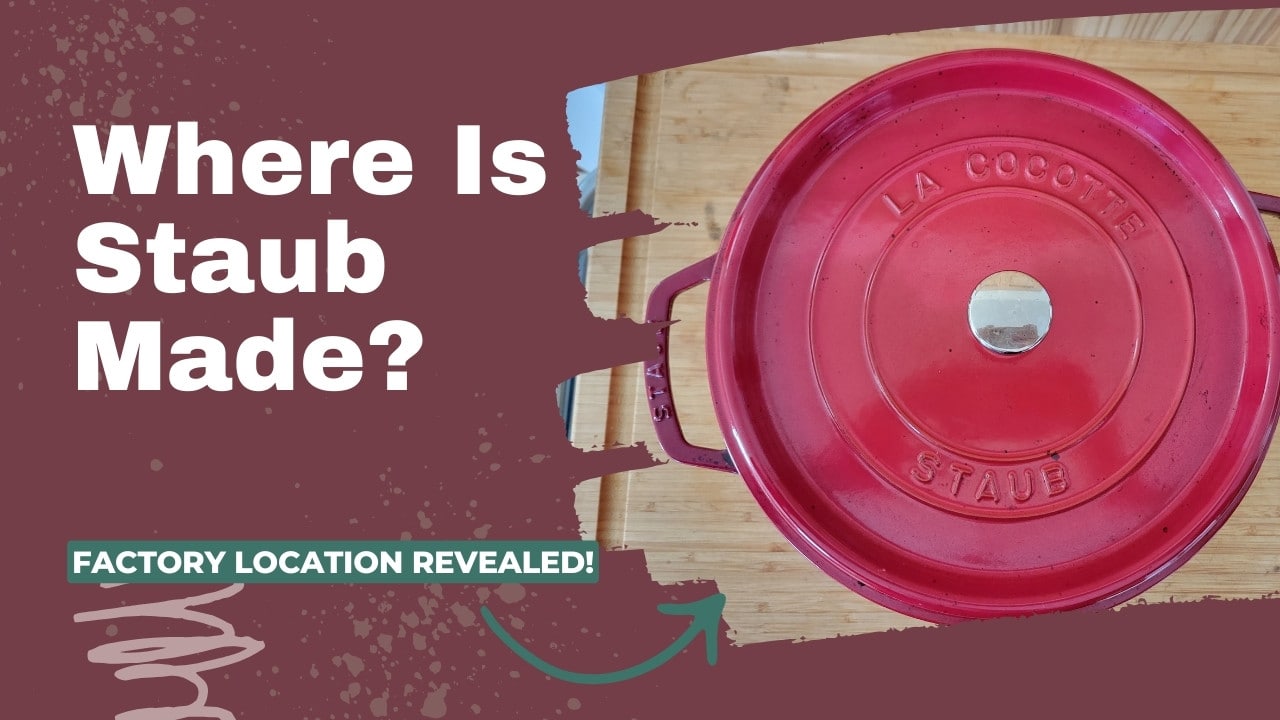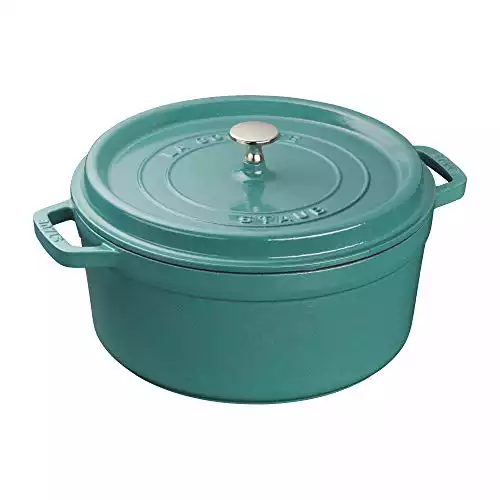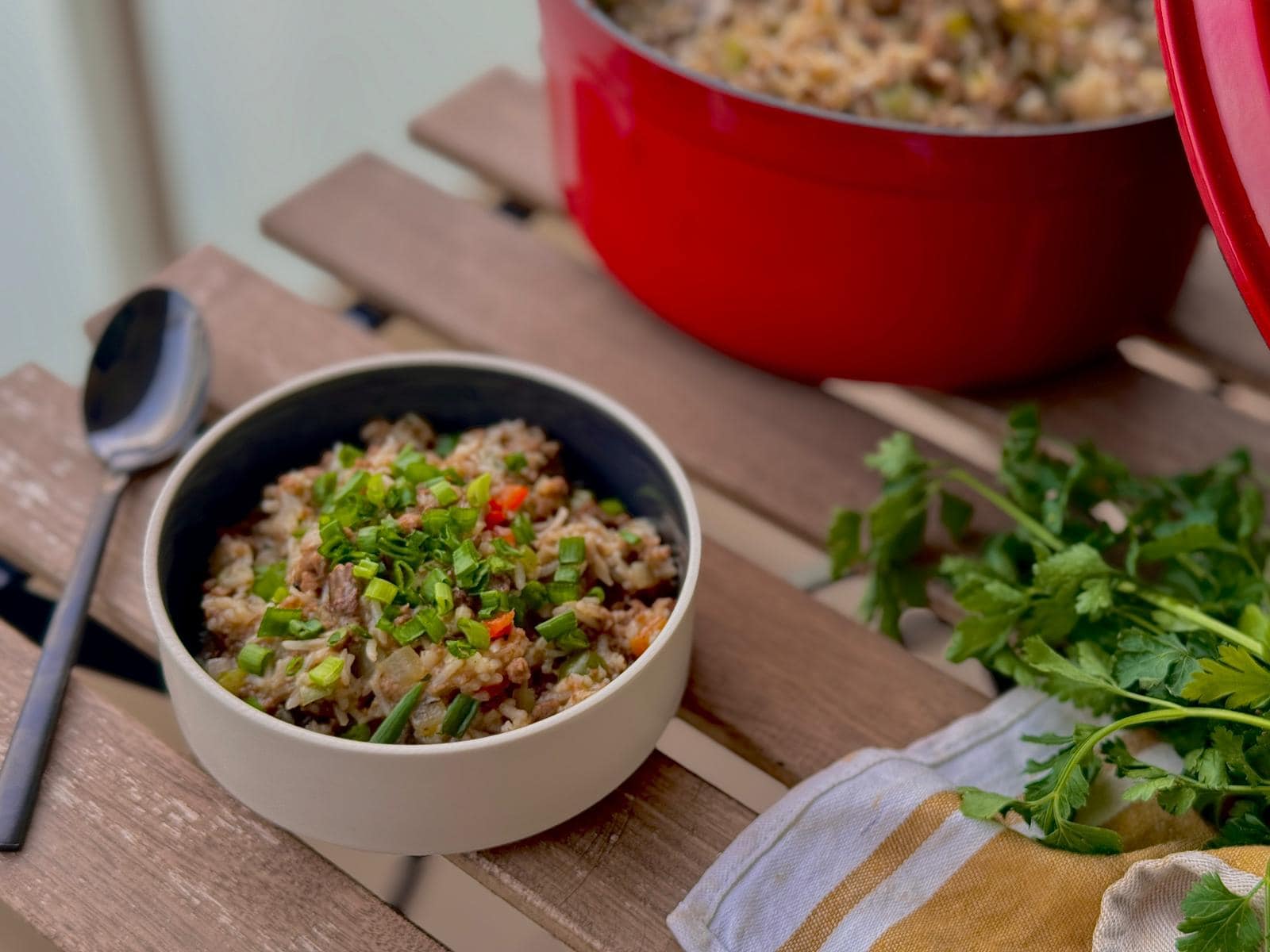If you’re in the market for an heirloom-quality enamel cast iron Dutch oven, Staub is probably at the top of your list. Along with “the other” famous brand, Le Creuset, Staub is recommended by many home and professional chefs.
A quick search for Staub cookware leads you to the Zwilling website. Now, you may wonder if Staub is an independent brand or if it’s owned by Zwilling. And since Zwilling is a German company, is Staub made in Germany, too?
I had this question, too. So, I decided to do some research about Staub, its products, and its factories. Read along to learn what I discovered.
Where is Staub Made?
Staub’s enamel cast iron cookware is made in its own factories in Merville, France. This includes Staub Dutch ovens (also known as a “cocotte”), pans, skillets, and accessories. These are partially handmade and go through several quality checks.
Stuab’s other products, including its bakeware, cutlery, and dinnerware, are produced in China.
All About Staub
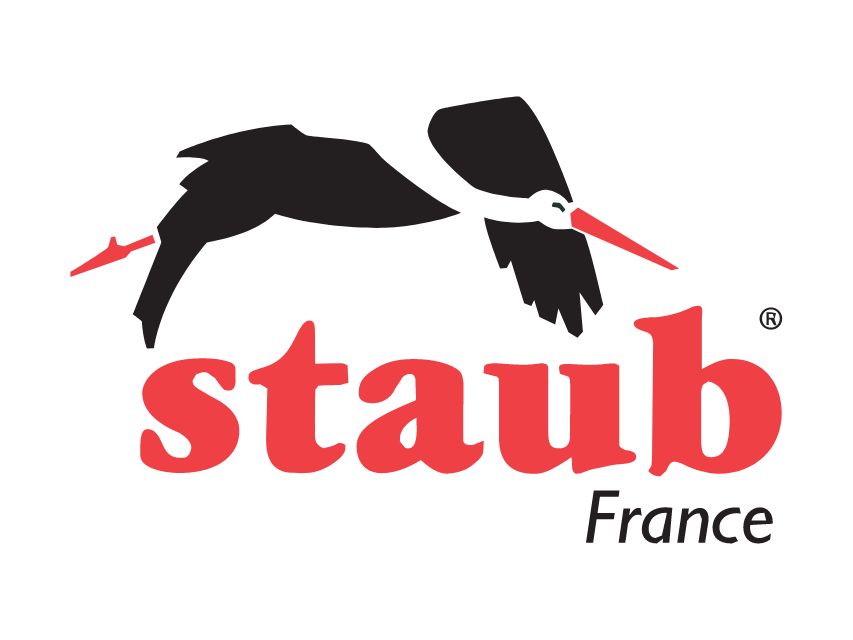
Staub is a French brand founded in 1974. Francis Staub made the company’s first product in Alsace, a region in eastern France. The symbol of this region is the stork, which is also Staub’s logo, a nod to the brand’s birthplace.
Stuab’s first product was the cocotte, the French word for Dutch oven. The original Staub cocotte was cast iron Dutch ovens, but the company branched out and offered other enameled cookware.
Now, they offer a wide range of products, including:
The German cookware giant Zwilling J.A. Henckels acquired Staub in 2008, but the brand continues to operate as a separate entity. That’s why it has a separate section on Zwilling’s website.
Currently, Zwilling owns several popular brands, including Miabi, Balirini, and Henkels.
How are Staub Dutch Ovens Made?
The Staub enameled cast iron Dutch ovens are made in Staub’s French factory using a mix of traditional hand-crafting and custom-designed machines. Here’s what the process involves.
- Aluminum molding plates are made.
- Raw materials are melted and poured into sand molds. These sand molds are made of premium quality French sand, recycled and reused daily.
- After cooling, the mold is separated and sand particles are shaken out.
- During blast cleaning, dust, sand, and impurities are removed.
- Burrs are removed through machine and manual grinding and fettling.
- Dutch ovens go through shot blasting to remove imperfections. If any imperfections remain, the artisans remove them by hand.
- The cocotte goes for enamel coating and is baked at 800C.
- It goes through meticulous quality inspection before it’s packaged.
Here’s a satisfying video outlining the processes of making Staub Dutch ovens.
How To Tell Counterfeit Staub Dutch Ovens
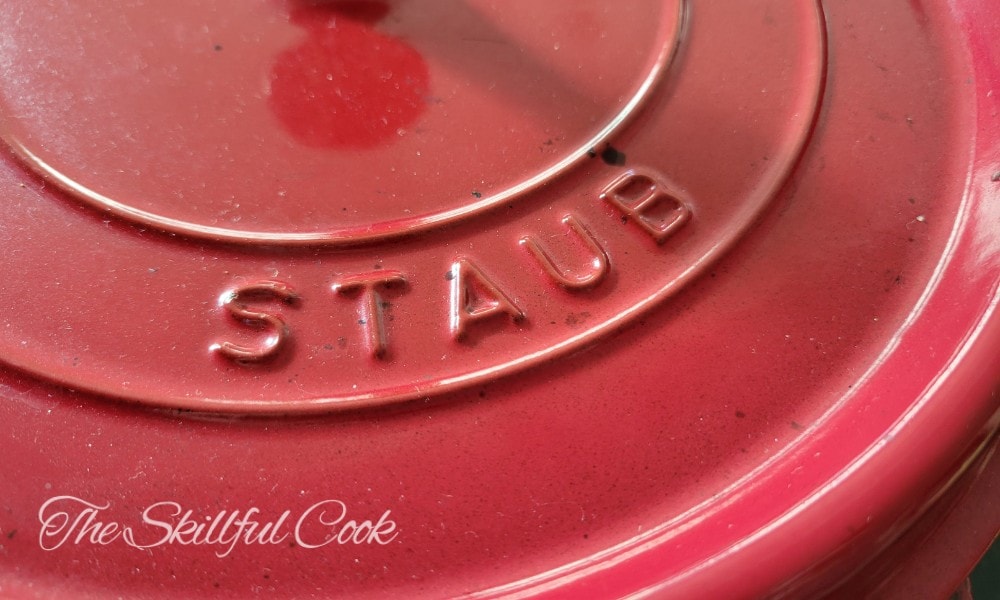
If you get your Staub Dutch oven from reputable outlets, such as Zwilling’s website or Amazon (sold by Amazon, not third-party sellers), you won’t risk buying a fake product. But if you want to be 100% sure your product is original, check these signs.
Price
Staub enamel cast iron Dutch or French ovens aren’t exactly the cheapest cookware in the market. Depending on the model, they can cost between $150-$300, even when on sale. So, a Staub Dutch oven that costs $40 is too good to be true.
- Made in France
- Tight-fitting lid
- Oven safe
Enamel Quality
Staub enamel coatings are thick, look shiny, and are of premium quality. Staub applies two or three enamel coatings to its cookware, depending on the color. If the Dutch oven’s enamel coating looks cheap and thin or is uneven with a dull color, it’s more likely fake.
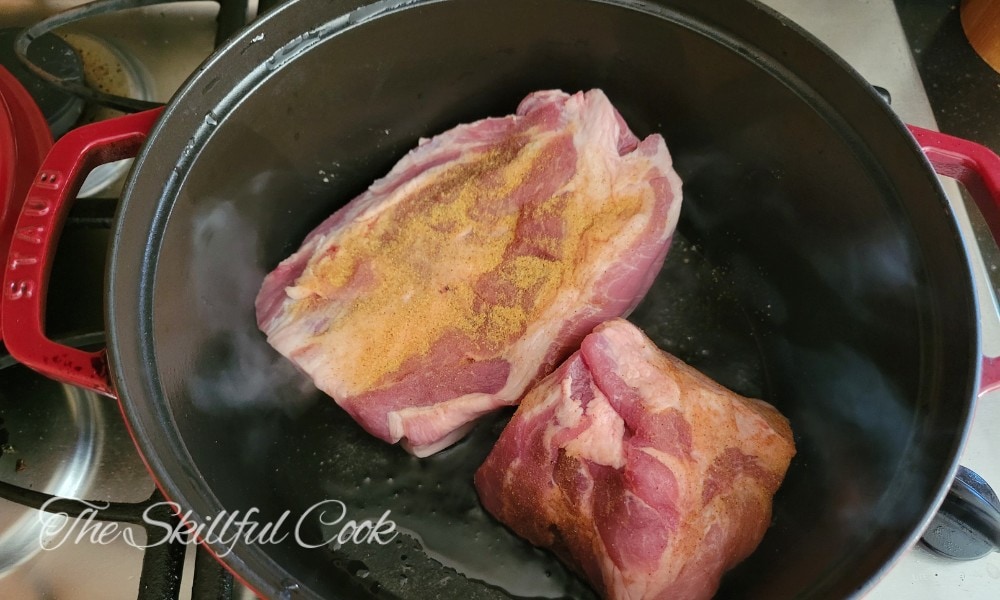
Staub does occasionally sell pieces with “visual imperfections” at a discount on its website. These imperfections may include chips that have been enameled over.
Weight
Compare the weight of your Staub cocotte to published weights on authorized seller’s websites. Cheaper cast iron dupes tend to have a higher carbon content, which makes them more brittle and requires them to be made thicker and heavier.
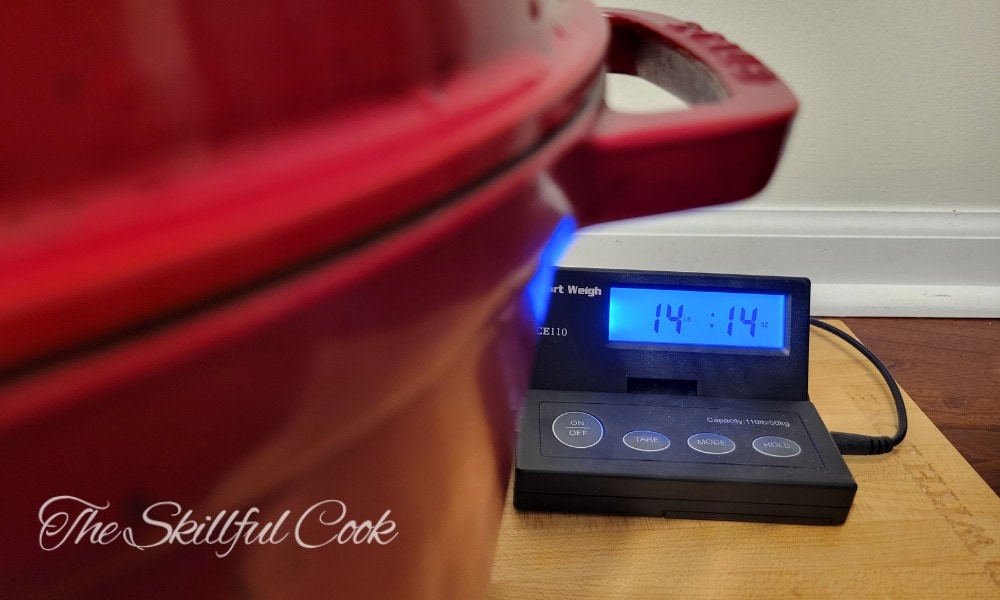
Logos on the Lids and Handles
You can see Staub’s name all over the cookware’s body. The Dutch oven’s handles have “Staub” embossed on them. On the bottom of the cookware, you can see “Made in France” and some numbers that show the Dutch oven’s size. And the lid reads “La Cocotte” and “Staub.”
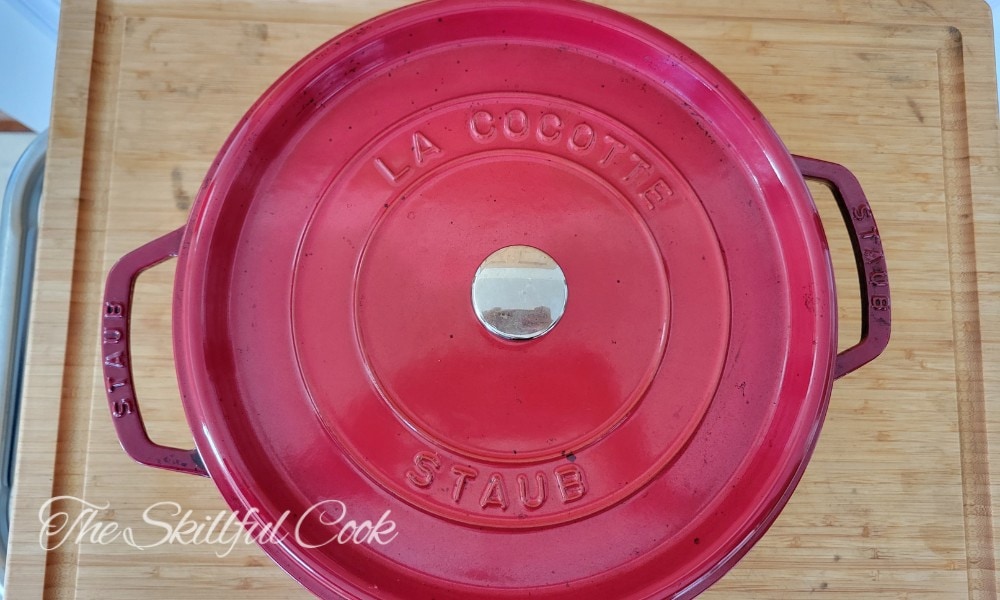
All these are integrated into the metal since they are part of the molding. So, if they’re printed or painted onto the enamel, it’s fake.
Lid Design
Staub enamel cast iron Dutch oven lids have a special design that features metal spikes on the interior side of the lid. These spikes condense the vapor, turning it into liquid and returning it to the food. This ensures a heartier and thicker stock.
When inspecting Staub cookware, make sure the lid has these spikes. Staub cocotte lids are flat across the top, unlike Le Creuset lids which are domed.
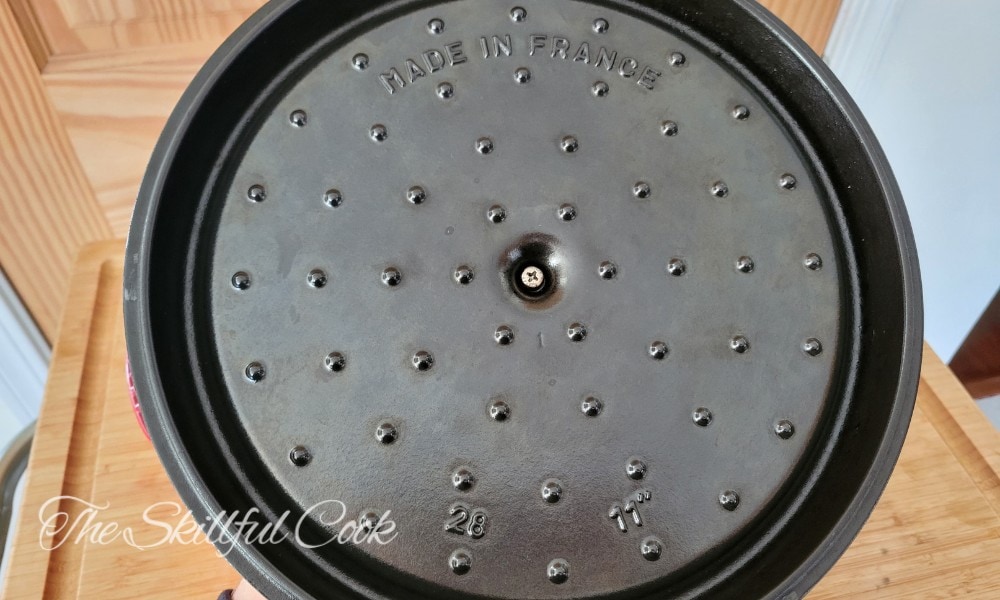
FAQs
Where Is Staub’s Factory?
Staub’s factory is in Merville, in northern France. But not all Staub products are made in this factory. The enameled cast iron Dutch ovens are made by hand in Staub’s French factory. The other products, including ceramic bakeware, are produced in China.
Is Staub French or German?
Staub is a French brand founded by Francis Staub in the 1970s, and its enameled products are still made in eastern France. Staub was acquired by German company Zwilling JA Henckels in 2008.
What’s the Difference between Le Creuset and Staub?
Le Creuset and Staub are both reputable French brands that are famous for their handmade enamel cast iron products. Both products are durable and come with lifetime warranties.
They have different colors and designs, though. Le Creuset has a wider color selection and its interior enamel is light-colored, while Staub’s interior is black. And while both are pricey, Le Creuset is a bit more expensive than Staub.
What Staub Products are Made in China?
Other than Staub’s enamel cast iron Dutch ovens and other Dutch oven accessories, which are made in France, all of its products are made in China. These include ceramic bakeware, dinnerware, utensils, and accessories.
Does Staub comply with EU/US health regulations?
Staub complies with California Proposition 65, which mandates companies to declare toxic materials used in their products. You can use the Zwilling compliance portal to learn more about Zwilling products (including Staub) and regulation compliance. Zwilling makes extensive sustainability efforts with detailed reports.
Does Staub make anything besides Dutch ovens?
Staub makes a wide range of products in addition to Dutch ovens. It makes cast iron French ovens, pans, skillets, and accessories in its French factories. Plus, it has a wide selection of ceramic bakeware and dinnerware, cutlery, and utensils.
Conclusion
Staub is a reputable manufacturer that makes its cast iron products in France. Staub’s parent company is Zwilling, based in Germany, but Staub works independently. It also has other products, such as ovenware and dinnerware, all produced in China.

